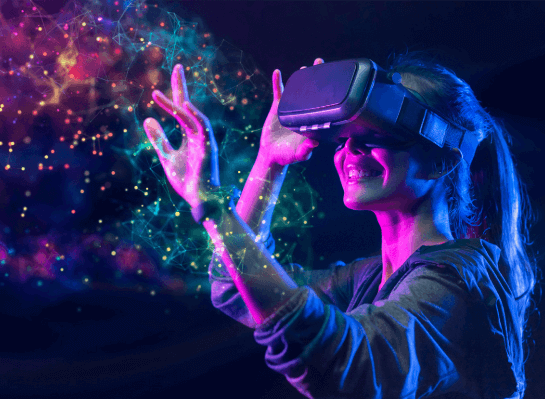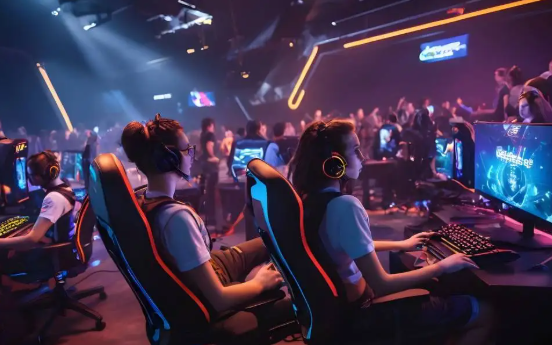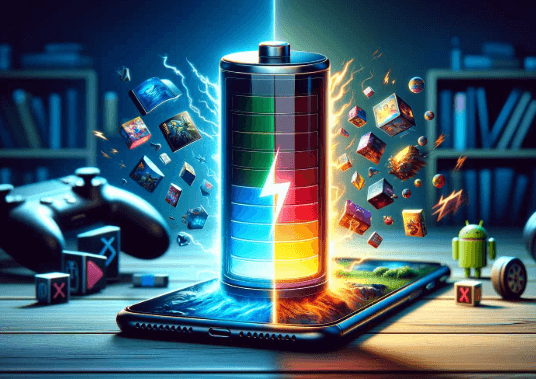Virtual Reality Gaming: Immersing Players in Digital Worlds

Virtual Reality (VR) gaming has experienced an incredible surge in popularity over the past decade. What was once considered a niche technology reserved for futuristic movies or experimental tech projects is now an immersive and thrilling reality for millions of gamers around the world. From exploring alien worlds to solving intricate puzzles, VR has transformed the way players interact with digital environments, offering a level of immersion that traditional gaming platforms can only dream of.
This article will delve deep into the world of VR gaming, exploring its evolution, the technology behind it, its current state, and what the future holds. Whether you’re a curious newcomer or a seasoned player, you’ll gain a comprehensive understanding of how VR gaming is shaping the future of interactive entertainment.
1. Introduction to Virtual Reality Gaming
What is Virtual Reality (VR) Gaming?
Virtual Reality (VR) gaming involves using specialized hardware, including a VR headset, motion controllers, and sometimes additional accessories, to immerse players in fully interactive 3D environments. Unlike traditional gaming, where players are seated in front of a screen, VR gaming allows players to physically move around and interact with the game world, offering a sense of presence and immersion.
The VR experience can simulate anything from walking on the moon to battling aliens or exploring the deepest parts of the ocean. VR aims to replicate the physical and emotional aspects of real-world experiences in a digital realm, providing a level of interactivity that’s unmatched by conventional video games.
See also: Esports: The Rise of Competitive Gaming and Its Global Influence
The Key Components of a VR System
A typical VR system consists of the following components:
- Headset: This is the main device that displays the virtual environment and tracks the player’s head movements.
- Motion Controllers: These hand-held devices are used to interact with the virtual world, offering precision and interactivity.
- Tracking Sensors: Sensors or cameras track the player’s position and movements in the physical space, which are then translated into the virtual world.
- PC/Console: The hardware required to run the VR experience, either a gaming PC, gaming console (like PlayStation), or standalone VR devices like the Oculus Quest.
2. The Evolution of Virtual Reality Gaming
Early Beginnings of VR Technology
The concept of virtual reality dates back to the 1950s, but it wasn’t until the 1980s and 1990s that VR technology began gaining attention in the gaming community. Early systems, like Sega VR and Virtual Boy from Nintendo, were rudimentary and failed to capture widespread interest due to technological limitations and high costs. These early devices were limited in their capability and often uncomfortable to use.
From Experimental Systems to Consumer Products
In the 2010s, advancements in computing power, display technology, and motion tracking brought VR gaming to a new level. The release of Oculus Rift in 2016 marked a major milestone, allowing for affordable, consumer-ready VR experiences. Companies like Sony, HTC, and Valve quickly followed suit, introducing their own VR systems, which helped solidify VR gaming as a mainstream entertainment option.
3. How Virtual Reality Works in Gaming
The Role of Headsets, Controllers, and Motion Tracking
The centerpiece of VR gaming is the headset, which provides an immersive visual experience by displaying high-definition images through dual screens (one for each eye), creating the illusion of depth and 3D space. Motion controllers are used to simulate hand movements, allowing players to interact with objects in the virtual world. Tracking sensors monitor the player’s movement, ensuring that actions like walking, turning, or reaching out are reflected in the game, making the experience feel seamless.
Importance of Immersive Environments and Real-Time Interactions
Immersion is the key to VR gaming. The ability to interact in real-time with the environment, whether it’s shooting, jumping, or solving puzzles, is what makes VR stand out from traditional gaming experiences. The use of high-quality graphics, realistic sound design, and responsive haptic feedback further enhances this sense of immersion.
4. Top VR Gaming Platforms
Oculus Rift: The Pioneer of Consumer VR
Oculus, now owned by Facebook (Meta), has been one of the biggest driving forces behind the rise of VR gaming. The Oculus Rift was one of the first affordable and consumer-friendly VR headsets, providing an immersive experience for both PC and console gamers.
PlayStation VR: Bringing VR to Console Gamers
Sony’s PlayStation VR brings the world of virtual reality to PlayStation consoles. Its affordability, combined with the popularity of PlayStation as a platform, has made PSVR one of the most widely used VR systems.
HTC Vive and Valve Index: High-End VR Experience
For those seeking a premium experience, HTC Vive and Valve Index offer high-resolution visuals, exceptional tracking, and advanced features like room-scale VR. These systems are more suited for enthusiasts and professional gamers, requiring a powerful gaming PC.
5. Popular VR Games that Redefine the Genre
Action and Adventure VR Games
Games like Half-Life: Alyx, Beat Saber, and Superhot VR are excellent examples of how VR can provide a truly immersive and dynamic gameplay experience. These games use VR’s motion-tracking capabilities to create action-packed scenarios where players physically engage with the environment.
Puzzle and Strategy Games in VR
Titles like The Room VR and Moss bring puzzle-solving and exploration to life. These games showcase VR’s ability to challenge players mentally while offering rich, immersive environments to explore.
Virtual Reality Sports and Fitness Games
VR is not just for entertainment—it’s also revolutionizing fitness. Games like Thrill of the Fight and BoxVR offer engaging workouts, while games like VR Sports Challenge give players the chance to participate in virtual versions of sports like basketball, soccer, and golf.
6. The Psychology Behind VR Gaming
Immersion and Presence: Creating Realistic Digital Worlds
The concept of immersion is central to VR. The goal is to trick the brain into believing the digital world is real, which requires the seamless integration of visuals, sound, and interactivity. The more realistic and responsive the environment, the greater the sense of presence— the feeling of “being there.”
How VR Gaming Affects the Brain and Perception of Reality
Research has shown that VR gaming can significantly affect how the brain processes spatial awareness, depth perception, and motion. In some cases, players have experienced heightened emotions or intense physical responses, such as increased heart rate or sweating, due to the high level of immersion VR provides.
7. VR Gaming and Social Interaction
Multiplayer VR Experiences
Many VR games support multiplayer modes, allowing players to engage with others in shared virtual spaces. Whether you’re teaming up to defeat enemies in a cooperative game or competing in a multiplayer match, VR’s social capabilities have expanded the boundaries of online gaming.
Social Platforms: VRChat, Rec Room, and More
VRChat and Rec Room are virtual worlds where players can meet, socialize, play mini-games, and attend events. These platforms have become massive communities where people interact, communicate, and even hold social gatherings like virtual concerts or parties.
8. The Impact of VR Gaming on Traditional Gaming
Bridging the Gap Between Consoles, PCs, and Virtual Worlds
VR is helping to bridge the gap between traditional gaming platforms (like consoles and PCs) and the digital world. VR experiences often blend elements of video games, social interaction, and even real-world physics, offering a new frontier for game designers to explore.
How VR Is Redefining Game Design
VR has forced game developers to rethink their approach to level design, gameplay mechanics, and user interface. Developers now focus on creating environments that are intuitive and comfortable for players to interact with, reducing the risk of motion sickness or discomfort.
9. VR Gaming and Physical Health: Benefits and Concerns
Health Benefits: Fitness and Rehabilitation through VR
VR gaming is being used as a tool for physical rehabilitation, helping individuals recover from injuries by performing specific exercises in a virtual environment. Additionally, fitness-focused VR games provide an excellent cardiovascular workout while keeping players engaged and entertained.
Motion Sickness and Eye Strain: The Challenges of VR Gaming
Despite its benefits, VR gaming also has its challenges. Motion sickness and eye strain are common complaints, particularly for players who are new to VR. Developers are continuously working to optimize VR experiences, but these issues remain a significant concern for many gamers.
10. The Future of Virtual Reality Gaming
The Role of Artificial Intelligence in VR Games
Artificial Intelligence (AI) is expected to play a key role in the evolution of VR gaming. AI can help create more responsive and intelligent non-playable characters (NPCs), making virtual worlds feel even more alive and interactive.
Emerging Technologies: Eye-Tracking, Haptic Feedback, and More
The future of VR gaming will also see advancements in eye-tracking and haptic feedback technologies. Eye-tracking allows VR systems to adjust visuals based on where the player is looking, while haptic feedback can simulate the feeling of touch, adding another layer of immersion.
11. The Cost of VR Gaming: Is It Worth the Investment?
Analyzing the Costs of VR Equipment
The cost of VR gaming can be high, especially when factoring in the price of headsets, controllers, and a powerful gaming PC or console. However, prices have come down in recent years, with options available for both high-end gamers and those looking for more affordable entry points.
Value for Money: Pros and Cons of Investing in VR Gaming
While VR gaming offers unparalleled immersion and unique experiences, it may not be for everyone. The initial investment, space requirements, and potential physical discomfort may deter some players. However, for those willing to dive into the world of virtual reality, the experience can be transformative.
12. VR Gaming for Non-Gamers: Breaking Barriers
Expanding the Audience Beyond Hardcore Gamers
VR gaming is breaking the traditional boundaries of gaming culture. More and more non-gamers are discovering the joys of VR, from casual experiences to deep, immersive adventures. The accessibility of VR is opening new doors to individuals who may have never considered gaming before.
Educational and Training Applications of VR
VR is also being used in education and professional training. Virtual classrooms, training simulations, and interactive learning environments provide hands-on experience that’s engaging and realistic.
13. Ethical and Privacy Issues in VR Gaming
Data Privacy Concerns in VR Platforms
As VR gaming collects more personal data, including movement, speech, and sometimes biometric data, privacy concerns have risen. It’s crucial that developers and platforms prioritize user privacy and secure their data from potential misuse.
The Ethics of Virtual Reality Worlds
Ethical questions also arise around the content within VR worlds. As players can inhabit digital avatars, issues like harassment and toxic behavior in virtual spaces have become more prevalent. Ensuring that these environments are safe and respectful is an ongoing challenge.
14. How VR Gaming is Changing the Entertainment Industry
VR in Movies, TV, and Live Experiences
Virtual reality is increasingly being used to enhance other forms of entertainment. VR allows viewers to experience movies and shows in a more immersive way, while live events such as concerts and sports games are being broadcast in VR to create a more engaging viewing experience.
VR as a Tool for Content Creation
VR is also transforming content creation. Artists, filmmakers, and designers are using VR tools to craft immersive experiences, films, and interactive stories that would be impossible to create in the physical world.
15. Conclusion: The Endless Possibilities of Virtual Reality Gaming
Virtual reality gaming represents a significant leap forward in how we interact with digital content. It has redefined not just gaming, but also entertainment, education, and social interaction. As technology continues to improve, the potential for VR gaming to revolutionize the way we experience digital worlds is limitless.
The journey is only just beginning, and the future of VR promises even more groundbreaking experiences that will blur the lines between reality and the virtual universe.
Frequently Asked Questions (FAQs)
1. What is VR gaming?
VR gaming is a form of video gaming that uses virtual reality headsets and motion controllers to immerse players in interactive 3D environments.
2. How does VR work in gaming?
VR works by using a headset to display images and motion tracking sensors to monitor the player’s movements, creating an interactive experience where the player can explore and engage with a virtual world.
3. What are the benefits of VR gaming?
VR gaming offers a highly immersive experience, enhances physical activity, and can be used for educational and professional training purposes.
4. What are some popular VR games?
Popular VR games include Beat Saber, Half-Life: Alyx, Superhot VR, and The Room VR.
5. How much does it cost to set up a VR gaming system?
The cost of setting up a VR gaming system varies. Entry-level VR headsets start around $300, while high-end systems can cost over $1,000, excluding the need for a powerful gaming PC.
6. What does the future hold for VR gaming?
The future of VR gaming looks promising with advancements in AI, eye-tracking technology, and haptic feedback. We can also expect more social interaction and immersive experiences across various platforms.



